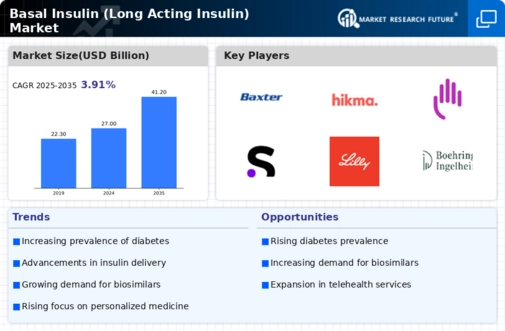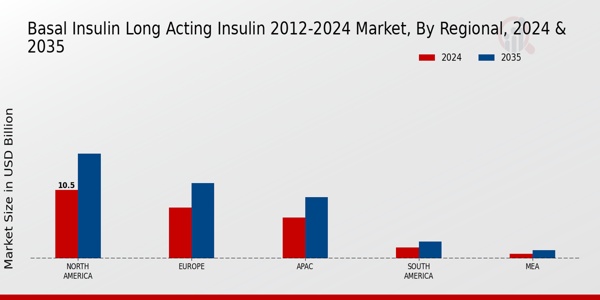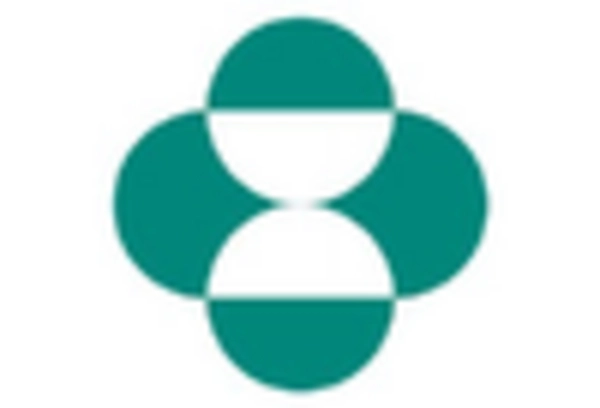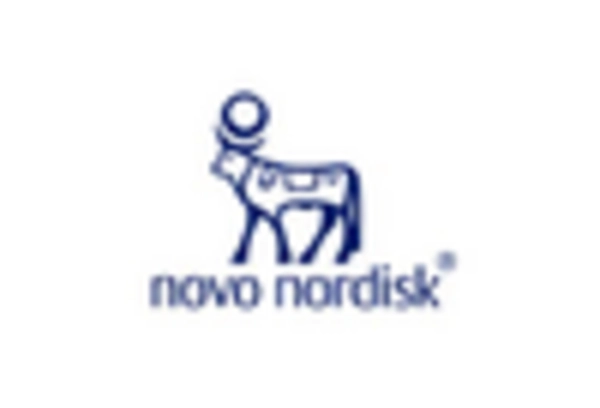Rising Geriatric Population
The increasing geriatric population is a significant factor driving the Basal Insulin (Long Acting Insulin) Market. Older adults are more susceptible to chronic conditions, including diabetes, which necessitates effective insulin management. By 2030, it is estimated that the number of individuals aged 60 and above will surpass 1.4 billion, creating a substantial demand for diabetes care solutions. Long-acting insulin is particularly beneficial for this demographic, as it offers convenience and stability in blood glucose management. Healthcare providers are increasingly focusing on tailored treatment regimens for elderly patients, further emphasizing the importance of basal insulin. This demographic shift is likely to enhance the market potential for long-acting insulin products, thereby shaping the future of the Basal Insulin (Long Acting Insulin) Market.
Increasing Prevalence of Diabetes
The rising incidence of diabetes, particularly Type 2 diabetes, is a primary driver for the Basal Insulin (Long Acting Insulin) Market. According to recent estimates, the number of individuals diagnosed with diabetes is projected to reach approximately 700 million by 2045. This alarming trend necessitates effective management strategies, including the use of long-acting insulin formulations. As healthcare systems worldwide strive to address this growing epidemic, the demand for basal insulin is expected to surge. Furthermore, the increasing awareness of diabetes management among patients and healthcare providers is likely to contribute to the expansion of the market. The need for reliable and effective insulin therapies is paramount, thereby reinforcing the significance of the Basal Insulin (Long Acting Insulin) Market in contemporary healthcare.
Advancements in Insulin Delivery Systems
Technological innovations in insulin delivery systems are significantly influencing the Basal Insulin (Long Acting Insulin) Market. The development of smart insulin pens, continuous glucose monitoring systems, and insulin pumps has transformed diabetes management. These advancements not only enhance patient adherence but also improve glycemic control. For instance, the integration of digital health technologies allows for real-time monitoring and data sharing, which can lead to more personalized treatment plans. As these technologies become more accessible, the demand for long-acting insulin formulations is likely to increase, as they are often preferred in conjunction with advanced delivery systems. This synergy between technology and insulin therapy is expected to propel the growth of the Basal Insulin (Long Acting Insulin) Market.
Emergence of Biosimilars in Insulin Therapy
The emergence of biosimilars is transforming the landscape of the Basal Insulin (Long Acting Insulin) Market. As patents for original insulin products expire, biosimilars offer a cost-effective alternative, potentially increasing patient access to essential diabetes therapies. The introduction of biosimilar long-acting insulins is expected to enhance competition in the market, leading to reduced prices and improved affordability for patients. This shift may encourage more individuals to initiate or continue insulin therapy, thereby expanding the overall market. Furthermore, regulatory bodies are increasingly supportive of biosimilar development, which could accelerate their entry into the market. The growing acceptance of biosimilars among healthcare providers and patients alike is likely to play a crucial role in shaping the future dynamics of the Basal Insulin (Long Acting Insulin) Market.
Growing Awareness and Education on Diabetes Management
The heightened awareness and education surrounding diabetes management are pivotal in driving the Basal Insulin (Long Acting Insulin) Market. Initiatives by healthcare organizations and governments to promote diabetes education have led to improved patient understanding of the disease and its management. As patients become more informed about their treatment options, the preference for long-acting insulin formulations is likely to increase. Educational programs that emphasize the importance of adherence to insulin therapy can lead to better health outcomes, thereby fostering a more robust market for basal insulin products. Additionally, the role of healthcare professionals in educating patients cannot be overstated, as their guidance is crucial in the selection of appropriate insulin therapies. This growing emphasis on education is expected to positively impact the Basal Insulin (Long Acting Insulin) Market.


















Leave a Comment